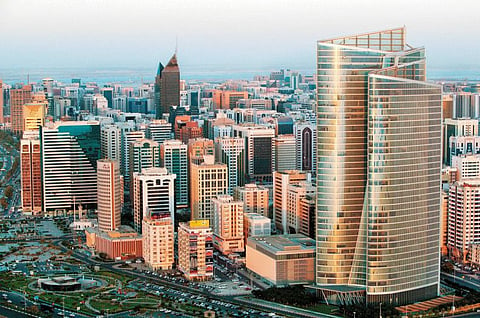UAE-India investments have clear road map
India emerges as the largest commercial infrastructure market outside of OECD

Abu Dhabi: The economic and investment partnership between India and the UAE is at an unprecedented level with a clear synergy about the road ahead, according to India’s sovereign wealth fund chief.
“India has very strong demographics and scalable growth potential that will lead to lots of investment opportunities, and allow us to feed into many of the strengths of the UAE,” said Sujoy Bose, Managing Director and CEO of India’s National Investment and Infrastructure Fund (NIIF).
“The UAE meanwhile brings both capital and expertise. It’s a gateway in many ways and the airports are crucial transit hubs. In my mind, the two nations will continue to find ways of working off each other’s strengths and take it to a different level.
“The infrastructure growth in the UAE has been phenomenal and the connectivity from here with the rest of the world is also exceptional. Whether Adia, DP World or others, we learn a lot from the UAE’s institutions.”
Seeking yield-hungry investors
With India emerging as the largest commercial infrastructure market outside of OECD and softening interest rates around the world, people seeking yield will clearly look at India, Bose said.
“Now, the question becomes that India also brings with it certain complexities. Both financial institutions and operators from the UAE seek the right partners when they go to India, and that’s how we have positioned NIIF. It’s a government-partnered institution with scale, good governance and the ability to create platforms,” he said.
“Hence it was great to have Adia become anchor investor for NIIF — it was crucial to for us to get going. We are working with Adia on a couple of transactions, we are working with DP World on ports and logistics investments. I see tremendous scope for UAE investors and companies to invest in the infrastructure sector in India, and partner with NIIF.”
Pre-emptive moves
Acknowledging that there will always be short-term blips in an economy like India, he said: “I would say to those looking to invest in India that this is the time before everybody starts flooding the market with capital.”
While most investors are attracted to India on the basis of yields and returns, the Indian government is also taking a number of steps to reduce some of the risks inherent with the investment climate, he said.
“The Indian Supreme Court’s verdict allowing ArcelorMittal to take over Essar Steel is a milestone. This hopefully opens up the bankruptcy process and the new bankruptcy code is one of the crucial reforms in the country.
“The Goods and Services Tax (GST) regime is now settling down and once that happens, we would have created a common market across India. Corporate income tax reduction is yet another milestone. So there are so many things that have happened in India in the last five-six years, and international investors are seeing a clear direction of reducing risks.”
Sign up for the Daily Briefing
Get the latest news and updates straight to your inbox


